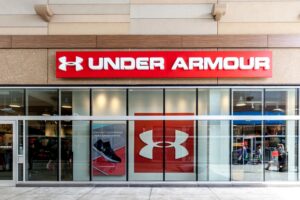
Image Courtesy of Kroger
November 24, 2025
Has Kroger Discovered the Limits of Automated Warehouses?
In a shift to “hybrid e-commerce offerings,” Kroger announced plans to close three of its eight automated warehouses opened with Ocado while expanding partnerships with Instacart, DoorDash, and Uber Eats.
Kroger said it is making the changes to speed up delivery times, lower prices, improve store conditions and lift operating margins. The moves are expected to improve e-commerce profitability by approximately $400 million in 2026.
Kroger will take a charge of $2.6 billion against third-quarter earnings due to the closures of facilities in Pleasant Prairie, Wisconsin; Frederick, Maryland; and Groveland, Florida, in January — and its automated fulfillment network “not meeting financial expectations.” Kroger further said it is “monitoring” its remaining facilities’ performance.
With the closure of the Groveland warehouse, Kroger will be ending delivery in Florida.
In geographies seeing a higher density of demand, automated customer fulfillment will be used support capacity needs.
Ocado stated that it would receive over $250 million in compensation following the closures.
Kroger’s Partnership With Ocado Began Years Ago, But Cost Overruns Abounded
Kroger first entered its partnership with Ocado in 2018 with a goal of building 20 robotic fulfillment centers nationwide, but the openings have proved more costly than anticipated. In September, Kroger signaled a potential retreat from its investment in automated warehouses when it announced a “site-by-site” review of the fulfillment network.
Ron Sargent, Kroger’s interim chairman and CEO, said, “We are building on a strong foundation with five consecutive quarters of double-digit eCommerce sales growth and increased profitability improvements. We are taking decisive action to make shopping easier, offer faster delivery times, provide more options to our customers, and we expect to deliver profitable sales growth as a result.”
Kroger Leans on Instacart, Uber Eats To Fill the Gap
As part of the shift, Kroger expanded its Instacart relationship as its primary delivery fulfillment provider, including recently becoming one of the first retailers to offer customers access to Instacart’s AI assistant.
Kroger, in October, expanded its relationship with DoorDash to include fresh foods, household goods, and other products versus a limited selection at some Kroger locations previously.
Kroger will also form its first partnership with Uber Eats Marketplace in early 2026.
“The pandemic bump didn’t hold, and shoppers moved back to stores quickly, so the economics of running dedicated e-commerce facilities may no longer make sense,” eMarketer analyst Suzy Davidkhanian told Reuters, adding Kroger’s partnerships with the online platforms provide it more reach among consumers.
“In this environment, partnering (with delivery companies) rather than fulfilling (orders) in-house is the more efficient path forward.”
Discussion Questions
Do you see Kroger’s move as confirmation that third-party delivery platforms will be the driver of e-grocery in the years ahead?
Is Kroger’s hybrid formula likely the optimal model for delivery for the grocer, or do you suspect Kroger will eventually close all its robotic warehouses?
Poll
BrainTrust
Tom Ryan
Managing Editor, RetailWire
Recent Discussions







The first issue is that the projected penetration of online grocery was overhyped during the pandemic. Indeed, on this very forum, we had ridiculous predictions that never materialized. This ultimately means the financial basis of Kroger’s investment was flawed: the volume needed to recoup the capital costs (and the Ocado model is expensive) was not there. Second, while the Ocado model helps reduce the cost to serve in terms of picking and packing, it does not reduce the cost or time to deliver – which in the US can be high because of lower population densities, especially compared to Ocado’s home market of the UK. The pivot now is to use stores – which are sunk costs and have a far better distribution for serving customers. Robotics and automation, of course, can play a role in stores.
Just goes to show that one size doesn’t really fit anyone very well. Perishables and fresh product benefit from that human touch…while center store product lends itself better to robotic picking. Physics says shipping time and cost are directly related to distance, which makes stores a better departure point for customer delivery, But then in store picking with those large carts detracts from the shopping experience for all the customers who choose to shop in store. Keep an eye on Amazon’s new in store – automated back room robotic picking for shelf stable product, with fresh product left for human interaction. That seems a better approach then the current all or nothing methods.